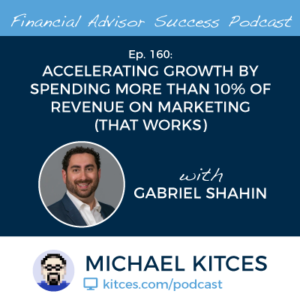In December 2019, the Setting Every Community Up For Retirement Enhancement (SECURE) Act was passed into law, making many substantial updates to long-standing retirement account rules. While one rule repealed the maximum age for making Traditional IRA contributions (as now IRA owners beyond age 70 1/2, and in fact of any age, are allowed to contribute to their accounts, as long as they have compensation [generally earned income] to contribute), another such rule was created that, in essence, limits the amount of Qualified Charitable Distributions (QCDs) a Traditional IRA account holder can make, depending on the cumulative amount of those post 70 1/2 deductible contributions claimed.
Qualified Charitable Distributions (QCDs) are tax-efficient methods of making charitable donations with funds from a Traditional IRA (or inherited Traditional IRA). Essentially, an account holder (or beneficiary) age 70 1/2 or older can transfer up to $100,000 each year directly to charity. While the distribution from the account can count toward the account holder’s annual RMD, it is not included as Adjusted Gross Income (AGI), and thus does not need to (and cannot) be included as a charitable gift itemized deduction, making it a ‘perfect’ pre-tax donation.
With the passage of the SECURE Act, however, IRA account owners must now reduce their intended QCDs by any contribution amounts made into their IRAs after age 70 1/2 (the age cap in place to make IRA contributions before passage of the SECURE Act), to the extent they have not already been used to reduce their QCD. In other words, IRA contributions made after age 70 1/2 cannot be turned around to be used as QCDs… and the rules effectively require a “LIFO” treatment that ensures post-age-70 1/2 contributions will first and foremost be used to reduce future QCDs.
Going forward, there are four steps used to calculate allowable QCDs (to account for the potential impact of post-age-70 1/2 contributions):
- Determine current-year distributions made and intended to be counted as QCDs;
- Calculate total remaining distributions to be denied QCD status (this includes any deductible Traditional IRA contributions made by the account owner after reaching age 70 1/2 minus any QCD amounts disallowed in prior years);
- Determine current-year distributions that will be denied QCD status (by identifying the lesser of the amount determined in steps 1 and 2); and
- Determine current-year distributions which will be treated as a QCD (by taking the amount from step 1 and subtracting the amount from step 3).
Presumably, this QCD ‘anti-abuse’ provision is meant to prevent individuals from deducting Traditional IRA contributions (above-the-line deductions that reduce a taxpayer’s AGI) and then donating those contributions on a pre-tax basis (as a QCD), particularly in scenarios where they otherwise were not itemizing deductions and could not have otherwise made a pre-tax charitable contribution.
Despite this new provision, though, financial advisors can use numerous strategies to help clients benefit from QCDs. For example, Traditional IRA contributions can be voluntarily removed if done by October 15th of the year following the year in which the contribution was made. Thus, an account holder who makes a contribution, who then decides they would instead prefer to make a QCD, can withdraw the contribution within the allowable timeframe, preventing any reduction to their QCD. Alternatively, married spouses who each have their own IRA account can choose to use one account to receive post-70 1/2 deductible contributions and the other to make QCDs. A third option would be for account holders to simply ‘burn’ through their post-70 1/2 contributions by making charitable donations from their IRAs that ‘use up’ QCD-disqualifying contributions as quickly as possible. While this means that taxable income will be reported for those account distributions, charitable gifts may be reported as itemized deductions, with future QCDs to be unaffected by these contribution amounts.
Some additional strategies available to advisors and their clients work to avoid the anti-abuse rule altogether. These include using other tax-efficient means to make charitable contributions (such as donating highly appreciated stock in a taxable account, which avoids potential capital gains taxes from selling the stock outright and, for those who itemize, allowing the contribution to be itemized as a charitable donation), contributing to employer-sponsored retirement plans (e.g., 401(k)s, and even SEP IRAs and SIMPLE IRAs) or Roth IRAs instead of Traditional IRAs (since contributions to Traditional IRAs only result in QCDs being denied), and choosing not to claim the deduction on Traditional IRA contributions (even if otherwise available) and deliberately making non-deductible contributions instead (to at least preserve the non-taxable treatment of those contributions for the future).
Ultimately, the key point is that the SECURE Act’s repeal of the age limit cap on Traditional IRA contributions has complicated the coordination of post-70 ½ contributions and QCDs with its introduction of the anti-abuse provision, which reduces allowable future QCDs by the amount of post-70 ½ IRA contributions. However, financial advisors can help their clients continue to make QCDs successfully with a range of planning strategies, some of which work with the anti-abuse provision, and some that avoid it altogether.

 Welcome back to the 160th episode of Financial Advisor Success Podcast!
Welcome back to the 160th episode of Financial Advisor Success Podcast! Welcome back to the 159th episode of Financial Advisor Success Podcast!
Welcome back to the 159th episode of Financial Advisor Success Podcast!
